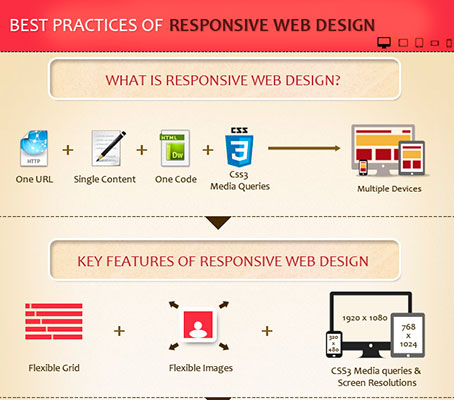Internet Site Design Fundamentals: Tips For Building A User-Friendly Site
Internet Site Design Fundamentals: Tips For Building A User-Friendly Site
Blog Article
Content By-Crews Bak
When it involves site layout, making sure user-friendliness is vital. From responsive design to structured navigating, every element plays an essential role in creating a site that accommodates your audience's requirements. However what concerning the finer details that can make or damage a customer's browsing experience? Stay tuned as we uncover some often-overlooked pointers that can elevate your site's functionality to the next degree, making it really stand out in the electronic landscape.
Importance of Responsive Style
Receptive style is an important facet of modern site growth. Related Site is responsive ways that it can adapt to various display dimensions and devices, offering a smooth experience for individuals.
With the boosting use of smartphones and tablets to access the web, having a receptive style is important for getting to a wider target market. It assists in improving customer experience by making your site simple to navigate and read on any device.
Furthermore, receptive style can positively impact your online search engine rankings, as internet search engine like Google focus on mobile-friendly websites. By having a receptive design, you're also future-proofing your site, as new tools with differing screen dimensions continue to emerge.
Simplify Navigating Framework
To boost individual experience and help with easy accessibility to info on your internet site, improving the navigating framework is extremely important. When designing your site, concentrate on producing a clear and intuitive navigating food selection that assists visitors find what they're seeking quickly.
Restriction the variety of menu items to the fundamentals, organizing associated web pages together to stay clear of overwhelming individuals. Usage detailed tags that clearly show the web content of each page, making it easier for customers to comprehend where each web link will take them.
Consider executing dropdown food selections for subcategories to stop jumbling the main navigation bar. Furthermore, include basic search engine optimization on the page for individuals that choose looking for certain details.
Focus on mobile responsiveness in your navigation design to make certain very easy access on all tools.
Enhance Page Tons Speed
Improving page load rate is essential for retaining site visitors on your web site. Slow-loading pages irritate customers and can cause high bounce prices. To enhance web page tons rate, begin by optimizing images. Compress pictures without jeopardizing quality to reduce their documents sizes.
Furthermore, enable internet browser caching to save often accessed sources in your area, quickening lots times for returning visitors. Minify CSS, JavaScript, and HTML data by getting rid of unnecessary characters, remarks, and formatting, improving load speed.
Take into ada web development utilizing a web content shipment network (CDN) to disperse your site's material across several servers worldwide, lowering latency for individuals accessing your website from various locations. Lastly, restrict the use of third-party manuscripts and plugins, as they can dramatically influence lots times.
Conclusion
In conclusion, by including responsive design, streamlining navigation, and maximizing page tons rate, you can develop a straightforward site that interest a broader target market and improves user experience. These essential elements ensure that site visitors can conveniently access and navigate your website across various tools, resulting in increased interaction and fulfillment. By focusing on these key elements, you can construct an effective internet site that keeps users returning for even more.
